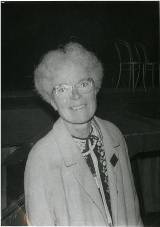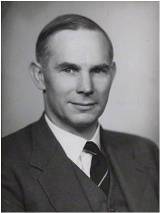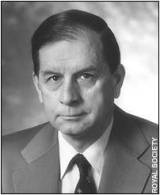History of Crystallography at The University of Leeds
 William Henry Bragg & William Lawrence Bragg
William Henry Bragg & William Lawrence BraggThe University of Leeds has a strong tradition of Crystallographic research and innovation for over 100 years. From 1912, the pioneering work of William Henry Bragg and his son William Lawrence Bragg in the Physics Department led to their joint award of the 1915 Nobel Prize in Physics "for their services in the analysis of crystal structure by means of X-rays". Their research at Leeds still underpins the discipline of Crystallography and was a starting point for many eminent crystallographers at the University. Find out more about the Braggs here or read their original laboratory notebooks, currently held as part of a Special Collection at the University's Brotherton Library.
Other notable Crystallographers who have worked at The University of Leeds include:
 Kathleen Lonsdale
Kathleen LonsdaleDame Kathleen Lonsdale During her time at The University of Leeds, Lonsdale's experiments on substituted benzenes proved conclusively that the benzene ring was planar. She later went on to become one of the first two women Fellows admitted to the Royal Society in 1945. Find out more about her life and work from the RSC and the IUCr.
 Ernest Gordon Cox
Ernest Gordon CoxSir Ernest Gordon Cox During his time in Leeds Cox became Chair of Inorganic and Structural Chemistry and made many important contributions to the field. Amongst a series of discoveries, he showed the importance of electronic computing and low temperature data collection to Crystallographers, issues still extremely relevant to crystallography today. Read obituaries from the IUCr and The Independant.
 Durward Cruickshank
Durward CruickshankProfessor Durward Cruickshank A much respected lecturer in Mathematical Chemistry at Leeds, Cruickshank also received his PhD from the University in 1952, entitled "A theoretical study of some of the interpretational methods used in crystal structure analysis". More information from the IUCr and The Telegraph.
